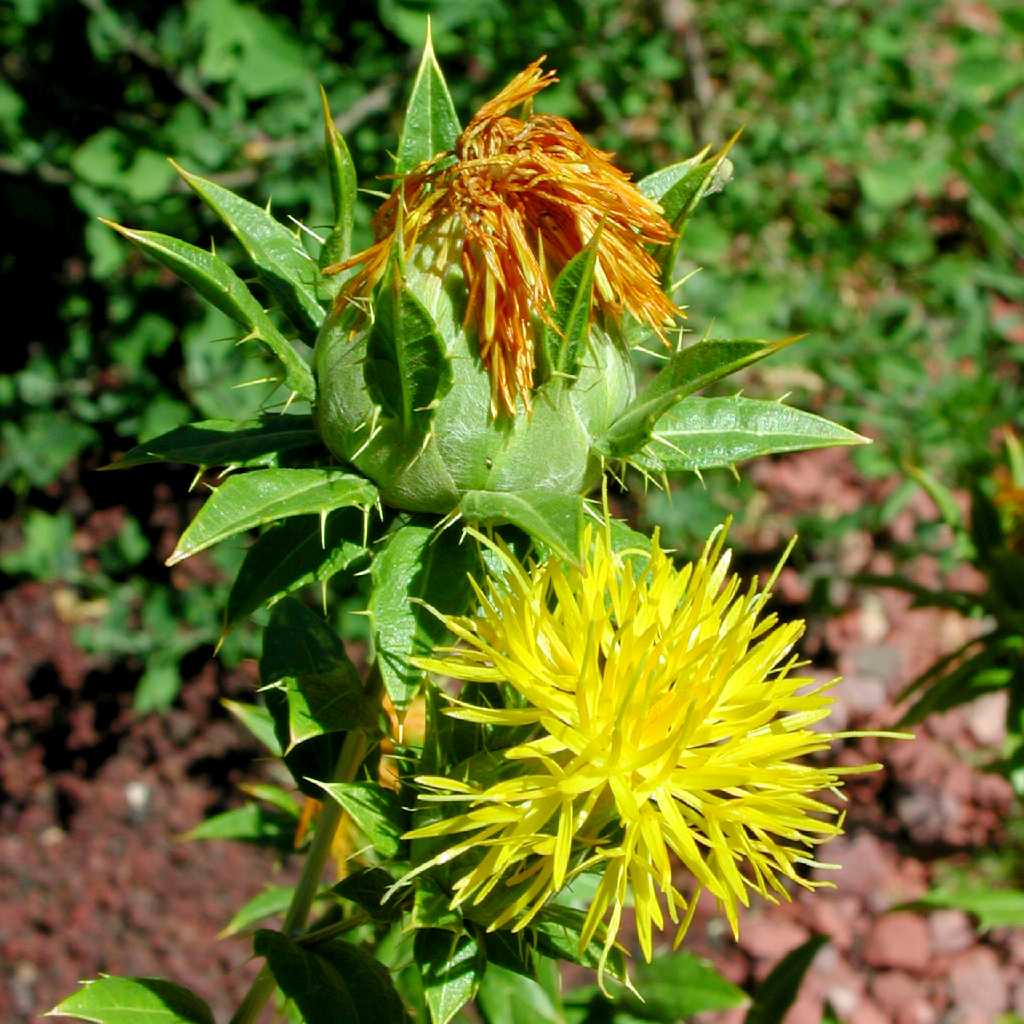Carthamus
|
Family: Asteraceae |
Annuals or perennials, 30-180 cm. herbage glabrous to ± glandular and/or ± tomentose. Stems usually erect, branched distally or throughout, (leafy). Leaves basal and cauline or all cauline; basal and proximal cauline winged-petiolate, distal cauline sessile, sometimes clasping; blade margins dentate to pinnately lobed, ± spiny, faces glabrous or ± glandlar and/or ± tomentose. Heads discoid, borne singly or in few-headed cymiform arrays. Involucres ovoid, constricted distally. Phyllaries many in 4-5 series. linear to ovate (at least outer ± leaflike), bases appressed, apical appendages more herbaceous, prominently veiny, spiny-dentate or -lobed, spine. tipped. Receptacles convex to conic, epaleate, bearing subulate scales. Florets 15-60+. corollas yellow to red or ± purple, tubes very slender, throats gradually or abruptly expanded, ± cylindric or short-campanulate, lobes linear; anther bases short-tailed, apical appendages oblong; style branches: fused portions with slightly swollen basal nodes minutely hairy, distally minutely papillate, distinct portions very short. Cypselae oblong to obpyramidal, ± 4-angled, apices with smooth or dentate rims, faces usually ± roughened (outer) or smooth (inner), glabrous, attachment scar. lateral; pappi 0 or (usually only inner cypselae) ± persistent, of many, usually unequal, narrow scales overlapping in several series. x = 10, 12. |

